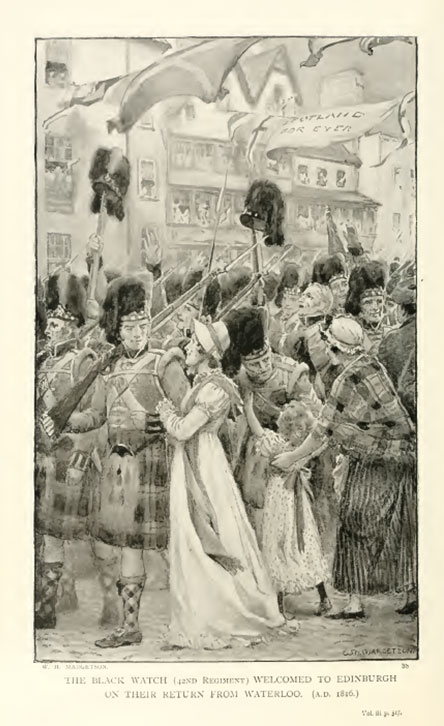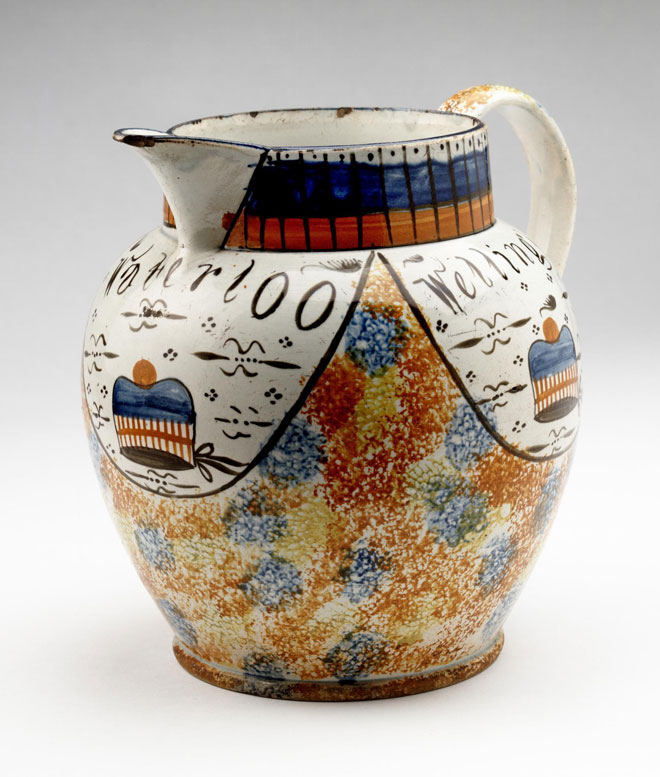For people in Scotland, Waterloo represented more than the defeat of a powerful enemy and threat. The victory was the highlight of the successful Scottish participation in the British military campaigns of the long wars against France. This was taken as symbolic of Scotland’s status as a full partner in Great Britain, but also as recognition of Scotland’s separate identity.
It is not surprising, then, that the veteran regiments which returned to Scotland almost a year after the battle were welcomed euphorically, another aspect of the battle explored in our exhibition Waterloo: After the Battle.
The 42nd Royal Highland Regiment of Foot – better known as the Black Watch – arrived in Edinburgh in March 1816. The men were honoured in a grand reception, which was held at the Assembly Rooms. The soldiers and guests, who had paid an entrance fee to see the returned heroes, were treated with roast beef and plum puddings, ale and whisky.

David Stewart of Garth, an officer of the Black Watch, writes about their return: “[I]t seemed as if two-thirds of the houses and the workshops in the city had been emptied of their inhabitants. Several hours before the regiment arrived, the road to Musselburgh was covered with carriages, horsemen and pedestrians. At Portobello the crowd was great, and, on entering the Canongate, it was a solid moving mass, pressed together as if in a frame. The pipers and the band could not play for want of room and were obliged to up their instruments. Many of the crowd, on raising their hands to take off their hats to wave them in the air, could not without difficulty get them replaced by their sides… Of the soldiers little was seen except their bonnets and feathers.”

Included in the exhibition are souvenirs of the celebration, such as the jug pictured above, which is decorated with images of a highland military bonnet, the words “Waterloo” and “Wellington”. As a uniquely Scottish souvenir, it fed people’s demand for commemorative items.
Waterloo: After the Battle runs at the National Museum of Scotland from 8 May – 20 September 2015.
